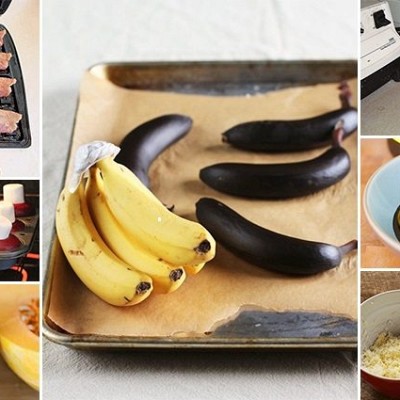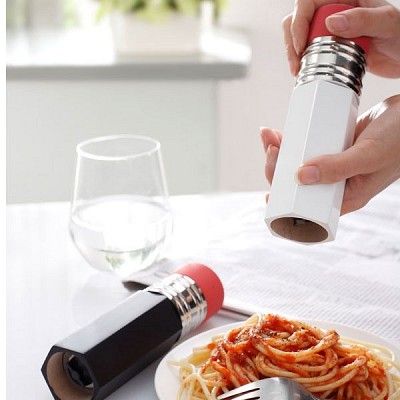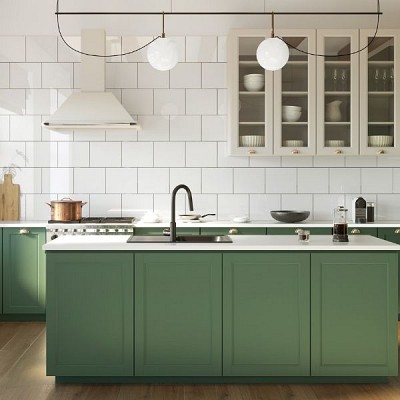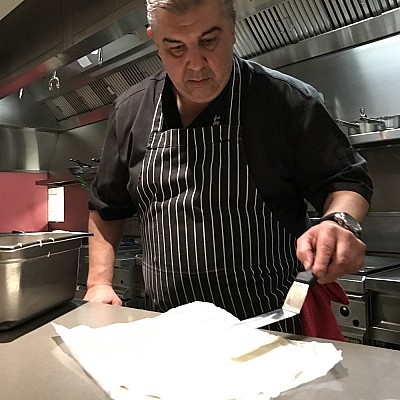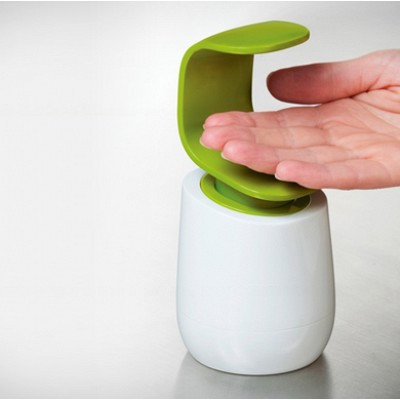Crafting a home cooking space that reflects the atmosphere of a professional establishment can bring both functionality and style under one roof. By blending practical details—like open shelving and stainless steel surfaces—with inviting lighting and appealing decor, you set the stage for memorable meals and lively gatherings.
Key Elements Inspired by Professional Kitchens
Open Shelving: Practical and Stylish Storage
One of the defining features of restaurant kitchens is the use of open shelving. Instead of hiding everything behind cabinet doors, chefs prefer easy access to their most-used items. This setup keeps everything visible, saving time and effort while cooking. At home, the same idea works beautifully for everyday use, making meal prep more efficient.
Open shelving provides more than just convenience—it also enhances the look of a space. Displaying pots, pans, and dishes adds layers of color and texture, creating a welcoming atmosphere. Whether it’s a collection of vintage plates, artisan ceramics, or neatly stacked glassware, these elements can bring personality into the room. Wooden shelves paired with metal brackets offer a rustic feel, while sleek floating shelves contribute to a contemporary look.
Beyond aesthetics, organization is key. Every item has its own designated place, preventing clutter from building up. By grouping similar items together—such as spices, baking essentials, or everyday plates—the space remains neat while staying practical. To maintain a clean and structured appearance, using matching containers or baskets can make a big difference.
For small kitchen ideas, open shelving can be a game-changer. Removing bulky cabinets can make a compact space feel more open, preventing a boxed-in effect. Lighter tones, such as natural wood or white shelving, help create an airy feel. To keep everything from looking too busy, a well-balanced mix of displayed items and negative space ensures the area remains stylish without feeling overwhelming.
Stainless Steel Surfaces: Function Meets Durability
In professional kitchens, stainless steel is a staple. Its durability, resistance to stains, and ability to handle high heat make it the perfect choice for heavy-use cooking areas. For home kitchens, bringing in stainless steel can elevate both the function and look of the space.
One of the main benefits of stainless steel is its resilience. It doesn’t absorb moisture, which makes it ideal for areas that see frequent spills and splashes. Unlike wood or stone, it won’t stain from acidic foods like tomatoes or wine, and it can handle extreme temperatures without damage. This is why many restaurant prep stations and countertops are made entirely from this material.
From a design standpoint, stainless steel provides a clean and modern look. It works seamlessly with various styles, from industrial to minimalist kitchens. In small modern kitchen layouts, its reflective surface can make the space feel brighter and more open, bouncing light around the room. Pairing it with wooden elements softens its appearance, creating a balanced mix of warmth and sleekness.
Another key advantage is how easy it is to maintain. Wiping down stainless steel countertops is quick, and they don’t require sealing or special cleaners. A simple microfiber cloth and a bit of mild soap can keep them looking spotless. For those who love to cook but don’t want to spend hours cleaning, this is a practical solution.
Incorporating stainless steel doesn’t have to mean going full industrial. Small additions, such as a stainless backsplash, appliances, or a prep table, can bring the benefits of this material without changing the entire layout. Whether aiming for a bold chef-style look or a more subtle upgrade, stainless steel is a strong choice for both function and style.
Effective Lighting: Brightening Up the Cooking Space
Lighting plays a critical role in any kitchen, but in a space modeled after a professional setup, it becomes even more essential. In restaurants, chefs rely on layered lighting to ensure every part of the workspace is well-lit. A home kitchen benefits from the same approach, combining overhead, task, and ambient lighting for the best results.
1. Overhead Lighting: The Foundation of a Well-Lit Kitchen
A bright, evenly distributed light source ensures that the entire kitchen is well-lit. Recessed lighting or track lighting can spread illumination across the space, reducing shadows that might make food prep more difficult. For those who prefer a more decorative option, large pendant lights above an island or dining area can serve as both functional lighting and a stylish focal point.
2. Task Lighting: Enhancing Work Areas
Just like in professional kitchens, focused lighting is needed for prep stations, stovetops, and counters. Under-cabinet LED strips are an excellent solution, as they provide direct light exactly where it’s needed. Whether chopping vegetables or reading a recipe, this type of lighting makes kitchen tasks easier and safer.
3. Ambient Lighting: Creating a Warm and Inviting Atmosphere
While bright lighting is necessary for cooking, softer lights add warmth. Pendant lights, small wall sconces, or dimmable options can create a cozy setting, making the kitchen feel inviting. This balance between practical brightness and soft accents is what makes restaurant-style spaces feel both functional and welcoming.
For kitchen designs that focus on efficiency, energy-saving LED options are worth considering. These provide strong illumination while consuming less power. They also last longer, reducing the need for frequent replacements.
Combining Function and Style
Good organization is a mainstay of any successful kitchen design. Consider adding hooks on empty walls for ladles or measuring cups, and divide drawers with bins or separators. This method saves time and keeps essential items visible. Whether inspired by industrial themes or softer motifs, well-chosen details ensure a balanced blend of efficiency and personality.
Adapting to Different Spaces
Not everyone has a sprawling layout. If you’re looking for compact kitchen ideas, make use of vertical storage. Installing shelves or magnetic racks on the walls can free up valuable counter area. For those who favor a more streamlined style, modern small kitchen ideas may include consistent color palettes, sleek cabinetry, and minimal hardware to achieve a refined look.
Creating a Welcoming Mood
Pairing practical elements with personal touches can enhance your cooking area. Artwork that highlights food or simple greenery can add character without overwhelming. A few accent pieces—a patterned rug or a well-placed centerpiece—can make the room feel comfortable and ready for gatherings.
Conclusion
Building a home setup that borrows from professional kitchens involves smart planning and thoughtful adjustments. Open shelving, durable materials, and layered lighting form a strong foundation. Add in clever organization and a touch of personal flair, and you’ll enjoy a lively environment that celebrates the joy of good food and good company.

































